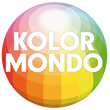Just a ferry ride from downtown Seattle, sits a charming farmhouse painted in the earthy red hue of Pantone Rosewood (19-1532). This is the home of Leatrice Eiseman, from the Pantone Color Institute — and arguably the most influential voice in color psychology and trend forecasting for a very long period.

“The Color Queen of America,” has spent decades decoding the language of color, its emotional power, and its applications across industries. Her journey from psychology student to global color authority is as colorful as the hues works with.
Ancient Wisdom, Modern Application
Eiseman’s core belief is that our connection to color is both psychological and physiological, rooted in what she calls an “ancient wisdom.” As she wrote in her book Pantone Guide to Communicating with Color, this innate response has evolved over eons, shaping our memory, behavior, and decision-making.
Her methods blend intuition with decades of fieldwork. One favorite tool? A simple Pantone chip and a single question: “What’s the first word that comes to mind?” Sky blue, for example, reliably evokes associations of openness and peace — across cultures.
A Life in Technicolor
Lea studied psychology, eventually earning a degree at Antioch University and a counseling certificate at UCLA. While teaching women’s occupational training courses in California, she developed her first major color concept: the “Color Clock”, based on natural light shifts and their influence on color perception.
Her 1983 book Alive with Color caught the attention of Larry Herbert, the founder of Pantone, who was seeking someone to explain the psychology behind color to a broader public. She’s been their ambassador ever since.
Color and the Self: A Chromatic Horoscope
In one book, The Complete Color Harmony, Pantone Edition, Eiseman introduces what might best be described as a color personality guide. Are you drawn to blue? You might be calm, reliable, and a team player. Prefer green? You could be the model community citizen. Avoid red? You might be exhausted or overwhelmed.
While these pronouncements may raise eyebrows among skeptics, Eiseman argues that these associations come from a deep-seated, almost instinctual place. And judging by her devoted following, many agree.
Critics and Believers
Not everyone buys into the gospel of color psychology. David Comberg, a design lecturer at the University of Pennsylvania, dismisses such theories as overly subjective. He suggests that cultural and emotional contexts outweigh any so-called universal truths.
Yet many professionals across design, branding, and marketing industries swear by Eiseman’s methods
The Power of Pantone
Ultimately, Eiseman’s legacy may be less about convincing skeptics and more about making color meaningful — and marketable.....

